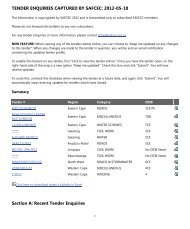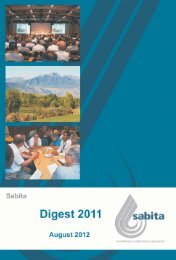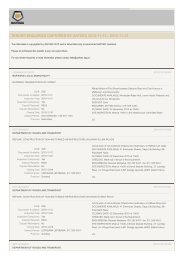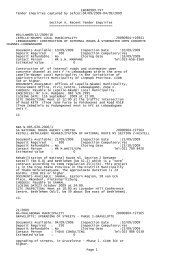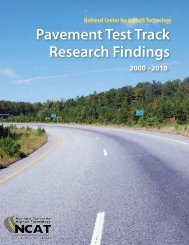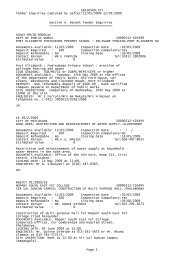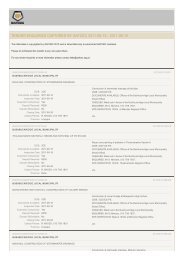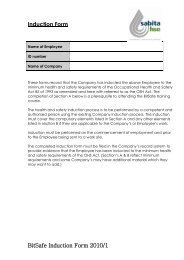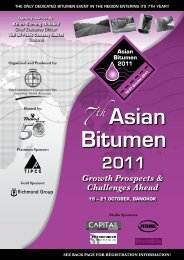DIGEST 2006 - Sabita
DIGEST 2006 - Sabita
DIGEST 2006 - Sabita
You also want an ePaper? Increase the reach of your titles
YUMPU automatically turns print PDFs into web optimized ePapers that Google loves.
coarse) graded, may be<br />
problematic as far as the Bailey<br />
Method is concerned, as the<br />
coarse and fine fractions could be<br />
struggling for control of the<br />
volumetric properties. The CA<br />
Ratio used is slightly higher than<br />
the upper acceptable limit<br />
suggested, which could indicate<br />
possible compaction problems in<br />
the field. The FA c ratio is within the<br />
acceptable limits, but the FA f ratio<br />
is slightly higher than the<br />
suggested upper limit which would<br />
indicate high mortar stiffness (as<br />
intended in the design for<br />
deformation resistance in the<br />
fundamental design methodology .<br />
This is contradictory to the PRADO<br />
analysis of the mix, which<br />
indicates a tender mix. Large<br />
quantities of this mix have been<br />
paved in Gauteng with no<br />
significant compaction problems<br />
(including various ORTIA<br />
applications over last three years).<br />
The quartzite mix is<br />
“coarse-graded” and the coarse<br />
aggregate is therefore in control of<br />
the volumetric properties. The CA<br />
ratio is higher than the upper<br />
acceptable limit suggested, which<br />
could indicate possible compaction<br />
problems in the field. The FA c ratio<br />
is within the acceptable limits, but<br />
the FA f ratio is higher than the<br />
suggested upper limit, which<br />
would indicate high mortar<br />
stiffness (as intended in the design<br />
to ensure good rut resistance).<br />
This is in agreement with the<br />
Ratio Principle Dolerite Quartzite Acceptable<br />
range<br />
CA Ratio 1 92.7 97.5



